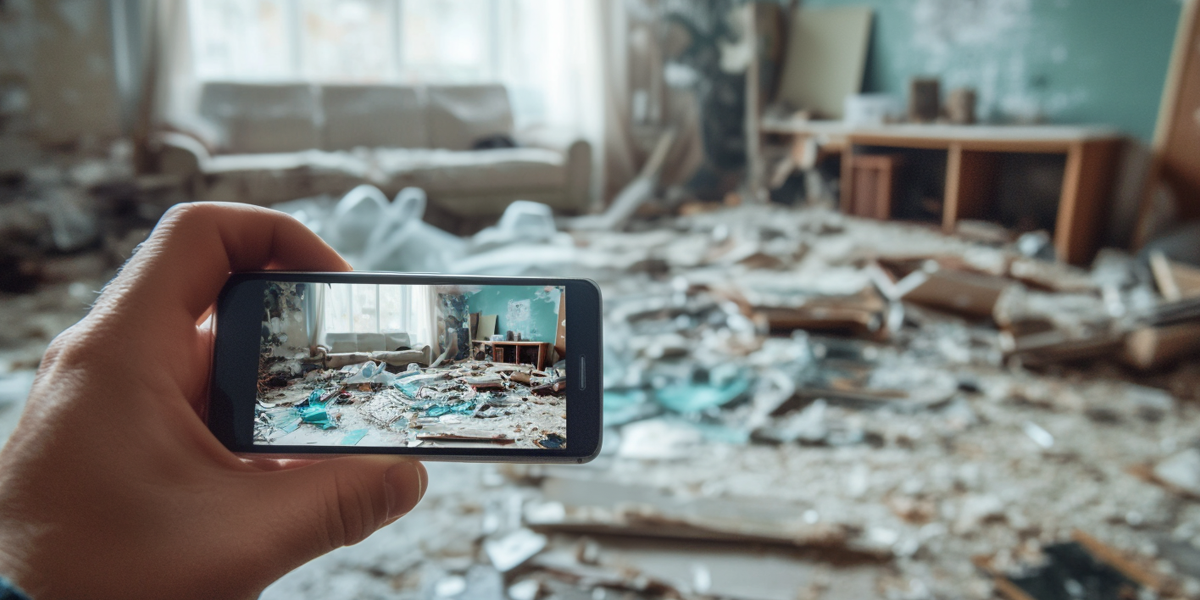When it comes to filing insurance claims, the adage "a picture is worth a thousand words" couldn't be more accurate. At Murray Law Group, we strongly advocate for policyholders to take proactive steps to protect their interests.
Effective photographic documentation can save you significant time and money during the claim process, ensuring a smoother and quicker resolution. Here’s how to correctly take photos for insurance claims, while avoiding common pitfalls.
Pre-Loss Documentation
Before any damage occurs, it's crucial to take comprehensive photos of your home. These images serve as a baseline, showing the condition of your property and possessions under normal circumstances.
Be sure to:
- Photograph each room, including valuable items, fixtures, and structural details.
- Save your images for possible future use, such as a cloud storage drive, to ensure they’re available when needed.
Post-Loss Documentation
After a loss, take photos immediately to capture the extent of the damage. Do this before you make any changes to the property or perform any emergency services. You want to capture the loss just as it occurred before any changes are made. These images will be invaluable when filing your insurance claim, providing a clear, visual representation of the destruction. Be sure to:
- Take wide shots of each affected area.
- Capture close-ups of damaged items and structures.
- Document any temporary repairs you’ve made to prevent further damage.
Common Mistakes in Insurance Claim Photos
Avoid these common mistakes when taking photos for insurance claims:
- Insufficient Photographic Evidence: Adjusters need comprehensive visual evidence to accurately assess the scope and extent of damage. Not providing enough photos can lead to incomplete evaluations and disputes. Include a variety of photos that depict the damage to avoid lengthy arguments about necessary repairs and associated costs.
- Lack of Context in Photos: Adjusters need to see the damage and its context within the larger environment. Photos should first show an overview of the area, then the location of the damage, and finally, the extent of the affected area. Take wide-angle shots that include the damaged area in context.
- Overloading the Adjuster with Photos: While thorough documentation is essential, overwhelming the adjuster with excessive photos can be counterproductive. Submitting an excessive number of photos can frustrate adjusters and slow down the review process. Select only the most relevant photos that directly support your damages. This focused approach can assist the adjuster and facilitate a smoother negotiation process.
By avoiding these common mistakes, you can improve the efficiency and success of your insurance claim process. Effective photo documentation is key to securing fair compensation and expediting claim resolutions. Start implementing these practices today to see better results and a smoother negotiation experience with your insurance adjuster.
Why Your Photos Matter
Insurance companies rely heavily on documentation to assess claims. Without clear evidence, you might face delays or disputes regarding the extent of the damage or the value of your lost items. Proper photographic documentation can significantly expedite the claims process and increase the likelihood of a fair settlement.
For more advice on protecting your interests as a policyholder, feel free to reach out to our experienced team at Murray Law Group. We’re here to support you every step of the way. If you have any problems during the insurance claim process, contact us to ensure your rights are protected and your claims are handled efficiently and fairly.
%20LOGO%20FINAL.png?width=1089&height=252&name=MLG%20(PREMIUM)%20LOGO%20FINAL.png)

